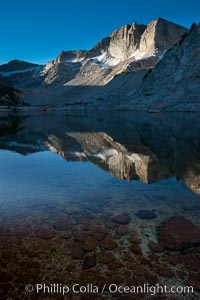
Cathedral Range peaks reflected in the still waters of Townsley Lake at sunrise.
Location: Yosemite National Park, California
Image ID: 25794
Location: Yosemite National Park, California
Image ID: 25794
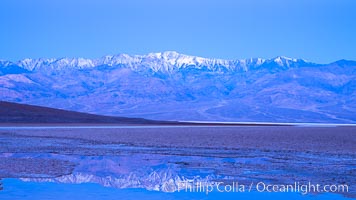
Sunrise lights Telescope Peak as it rises over the salt flats of Badwater, Death Valley. At 11,049 feet, Telescope Peak is the highest peak in the Panamint Range as well as the highest point in Death Valley National Park. At 282 feet below sea level, Badwater is the lowest point in North America.
Location: Badwater, Death Valley National Park, California
Image ID: 20549
Location: Badwater, Death Valley National Park, California
Image ID: 20549
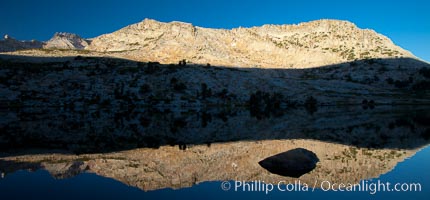
Vogelsang Peak (11500', at left) reflected in Vogelsang Lake, sunrise.
Location: Yosemite National Park, California
Image ID: 25774
Location: Yosemite National Park, California
Image ID: 25774
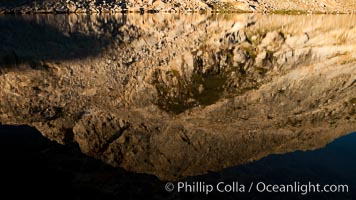
Fletcher Peak takes on the golden colors of sunrise, reflected in the still waters of Townsley Lake, in Yosemite's high country.
Location: Yosemite National Park, California
Image ID: 25787
Location: Yosemite National Park, California
Image ID: 25787
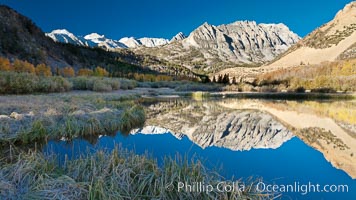
Sunrise on Paiute Peak, reflected in North Lake in the eastern Sierra Nevada, in autumn.
Location: Bishop Creek Canyon Sierra Nevada Mountains, California
Image ID: 26055
Location: Bishop Creek Canyon Sierra Nevada Mountains, California
Image ID: 26055

Downtown San Diego City Skyline Before Sunrise, a High Resolution Panorama with Distant Mountains and City Lights.
Location: San Diego, California
Image ID: 40167
Panorama dimensions: 4344 x 12109
Location: San Diego, California
Image ID: 40167
Panorama dimensions: 4344 x 12109

Downtown San Diego City Skyline Before Sunrise, a High Resolution Panorama with Distant Mountains and City Lights.
Location: San Diego, California
Image ID: 40168
Panorama dimensions: 5545 x 21223
Location: San Diego, California
Image ID: 40168
Panorama dimensions: 5545 x 21223
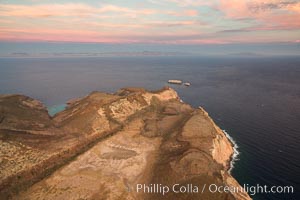
Isla Partida highlands at Sunrise, view toward Punta Maru and Los Islotes, Aerial Photo.
Location: Isla Partida, Baja California, Mexico
Image ID: 32453
Location: Isla Partida, Baja California, Mexico
Image ID: 32453
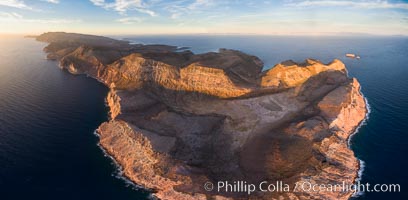
Isla Partida highlands at Sunrise, view toward Punta Maru and Los Islotes, Aerial Photo.
Location: Isla Partida, Baja California, Mexico
Image ID: 32454
Panorama dimensions: 4031 x 8221
Location: Isla Partida, Baja California, Mexico
Image ID: 32454
Panorama dimensions: 4031 x 8221
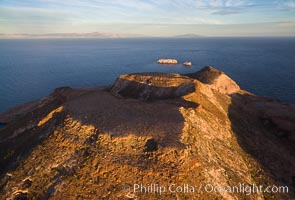
Isla Partida highlands at Sunrise, view toward Punta Maru and Los Islotes, Aerial Photo.
Location: Isla Partida, Baja California, Mexico
Image ID: 32455
Location: Isla Partida, Baja California, Mexico
Image ID: 32455
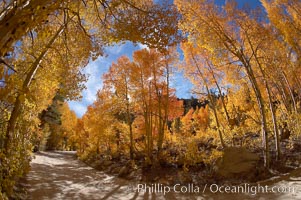
Aspen trees displaying fall colors rise alongside a High Sierra road near North Lake, Bishop Creek Canyon.
Species: Aspen, Populus tremuloides
Location: Bishop Creek Canyon, Sierra Nevada Mountains, California
Image ID: 17557
Species: Aspen, Populus tremuloides
Location: Bishop Creek Canyon, Sierra Nevada Mountains, California
Image ID: 17557
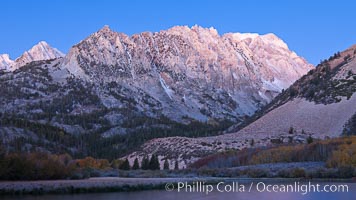
North Lake and Sierra Nevada, predawn alpenglow lights the peaks.
Location: Bishop Creek Canyon Sierra Nevada Mountains, California
Image ID: 26079
Location: Bishop Creek Canyon Sierra Nevada Mountains, California
Image ID: 26079
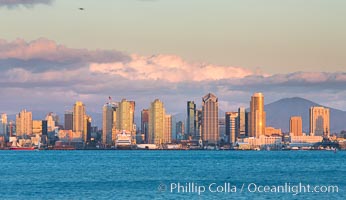
San Diego city skyline, dusk, clearing storm clouds.
Location: San Diego, California
Image ID: 28006
Location: San Diego, California
Image ID: 28006

San Diego city skyline, dusk, clearing storm clouds.
Location: San Diego, California
Image ID: 28007
Location: San Diego, California
Image ID: 28007

San Diego city skyline, dusk, clearing storm clouds.
Location: San Diego, California
Image ID: 28008
Panorama dimensions: 5376 x 19525
Location: San Diego, California
Image ID: 28008
Panorama dimensions: 5376 x 19525
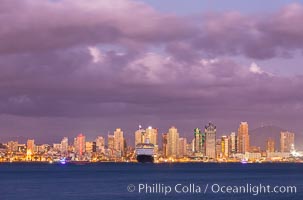
San Diego city skyline, dusk, clearing storm clouds.
Location: San Diego, California
Image ID: 28009
Location: San Diego, California
Image ID: 28009
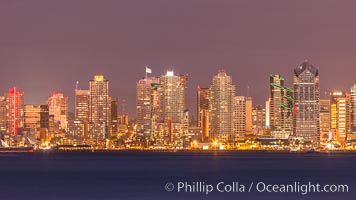
San Diego city skyline, dusk, clearing storm clouds.
Location: San Diego, California
Image ID: 28010
Location: San Diego, California
Image ID: 28010

San Diego city skyline, dusk, clearing storm clouds.
Location: San Diego, California
Image ID: 28019
Panorama dimensions: 3393 x 12620
Location: San Diego, California
Image ID: 28019
Panorama dimensions: 3393 x 12620
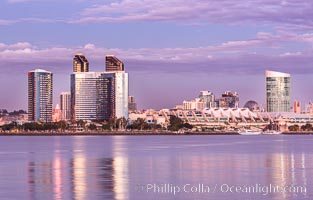
San Diego city skyline, dusk, clearing storm clouds.
Location: San Diego, California
Image ID: 28020
Location: San Diego, California
Image ID: 28020
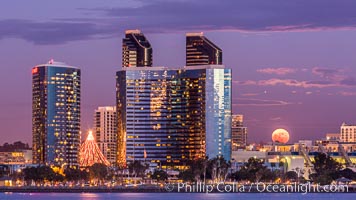
Full moon rising over San Diego city skyline, sunset, storm clouds, viewed from Coronado Island.
Location: San Diego, California
Image ID: 28021
Location: San Diego, California
Image ID: 28021

Full moon rising over San Diego city skyline, sunset, storm clouds, viewed from Coronado Island.
Location: San Diego, California
Image ID: 28022
Location: San Diego, California
Image ID: 28022
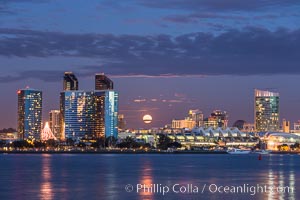
Full moon rising over San Diego city skyline, sunset, storm clouds, viewed from Coronado Island.
Location: San Diego, California
Image ID: 28023
Location: San Diego, California
Image ID: 28023

Full moon rising over San Diego city skyline, sunset, storm clouds, viewed from Coronado Island.
Location: San Diego, California
Image ID: 28024
Panorama dimensions: 3414 x 20070
Location: San Diego, California
Image ID: 28024
Panorama dimensions: 3414 x 20070

Full moon rising over San Diego city skyline, sunset, storm clouds, viewed from Coronado Island.
Location: San Diego, California
Image ID: 28025
Location: San Diego, California
Image ID: 28025
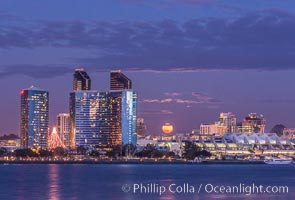
Full moon rising over San Diego city skyline, sunset, storm clouds, viewed from Coronado Island.
Location: San Diego, California
Image ID: 28026
Location: San Diego, California
Image ID: 28026

Full moon rising over San Diego city skyline, sunset, storm clouds, viewed from Coronado Island.
Location: San Diego, California
Image ID: 28027
Panorama dimensions: 3432 x 12672
Location: San Diego, California
Image ID: 28027
Panorama dimensions: 3432 x 12672
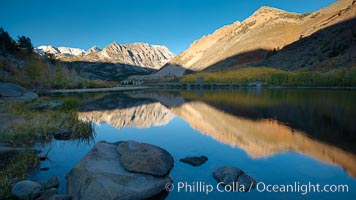
Sunrise on Paiute Peak, reflected in North Lake in the eastern Sierra Nevada, in autumn.
Location: Bishop Creek Canyon Sierra Nevada Mountains, California
Image ID: 26058
Location: Bishop Creek Canyon Sierra Nevada Mountains, California
Image ID: 26058
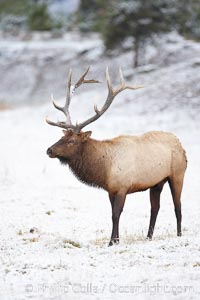
Large male elk (bull) in snow covered meadow near Madison River. Only male elk have antlers, which start growing in the spring and are shed each winter. The largest antlers may be 4 feet long and weigh up to 40 pounds. Antlers are made of bone which can grow up to one inch per day. While growing, the antlers are covered with and protected by a soft layer of highly vascularised skin known as velvet. The velvet is shed in the summer when the antlers have fully developed. Bull elk may have six or more tines on each antler, however the number of tines has little to do with the age or maturity of a particular animal.
Species: Elk, Cervus canadensis
Location: Yellowstone National Park, Wyoming
Image ID: 19749
Species: Elk, Cervus canadensis
Location: Yellowstone National Park, Wyoming
Image ID: 19749
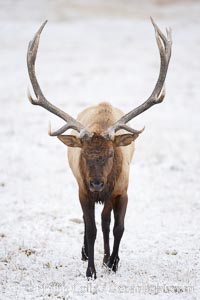
Large male elk (bull) in snow covered meadow near Madison River. Only male elk have antlers, which start growing in the spring and are shed each winter. The largest antlers may be 4 feet long and weigh up to 40 pounds. Antlers are made of bone which can grow up to one inch per day. While growing, the antlers are covered with and protected by a soft layer of highly vascularised skin known as velvet. The velvet is shed in the summer when the antlers have fully developed. Bull elk may have six or more tines on each antler, however the number of tines has little to do with the age or maturity of a particular animal.
Species: Elk, Cervus canadensis
Location: Yellowstone National Park, Wyoming
Image ID: 19767
Species: Elk, Cervus canadensis
Location: Yellowstone National Park, Wyoming
Image ID: 19767
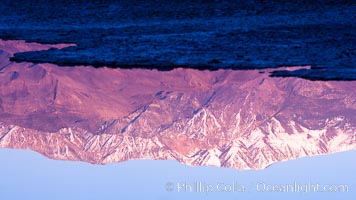
Sunrise lights Telescope Peak as it rises over the salt flats of Badwater, Death Valley. At 11,049 feet, Telescope Peak is the highest peak in the Panamint Range as well as the highest point in Death Valley National Park. At 282 feet below sea level, Badwater is the lowest point in North America.
Location: Badwater, Death Valley National Park, California
Image ID: 20550
Location: Badwater, Death Valley National Park, California
Image ID: 20550